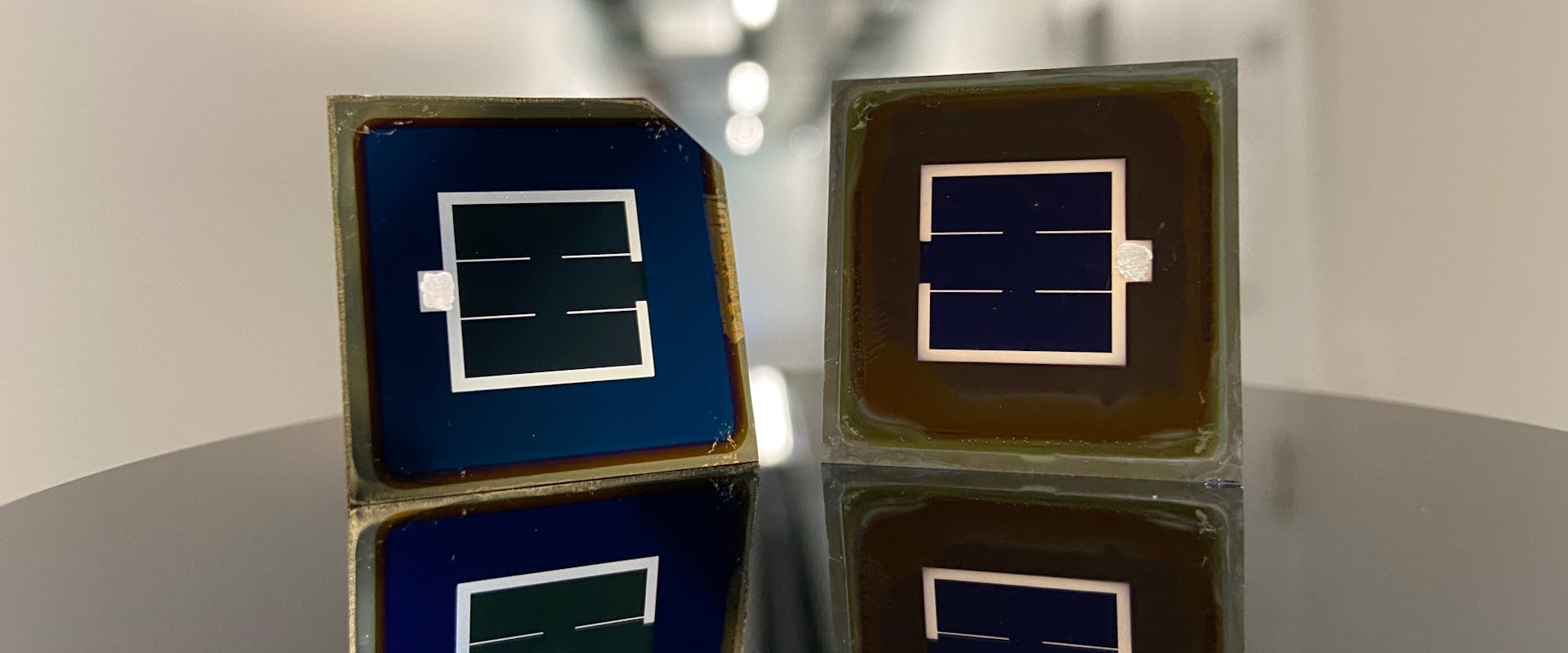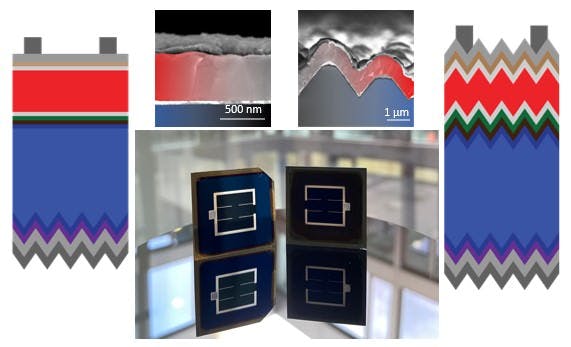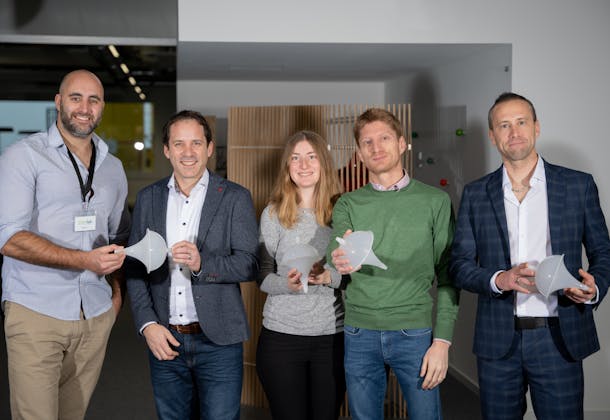Increasing the power conversion efficiency of solar cells is important for two reasons. In the long run, it is the most effective way to reduce the levelized cost of electricity. In the short term, it is the best way to promote photovoltaics for applications where space is limited e.g., roofs, facades, vehicles, or even drones.
However, all solar cells are fundamentally limited by the materials they are made from, which in turn affects the efficiencies they can achieve. The most adopted solar cell technologies to date are made with silicon. But despite silicon’s success, it has a theoretical ficiency limit of around 29%. Current efficiencies for this technology stand slightly below 27%, leaving a very small margin for future efficiency gains.
In the innovative race to exceed this limitation, scientists have added one (or more) complementary solar cell(s) to silicon to form “tandem” solar cells. The higher-energy visible light of the sun is absorbed in the top cell, while the lower-energy infrared light is absorbed in the silicon cell placed at the rear of the tandem. Halide perovskites have been identified as an ideal partner for silicon, as they can convert visible light more efficiently to electrical power in comparison to silicon alone, without overly increasing fabrication costs.




